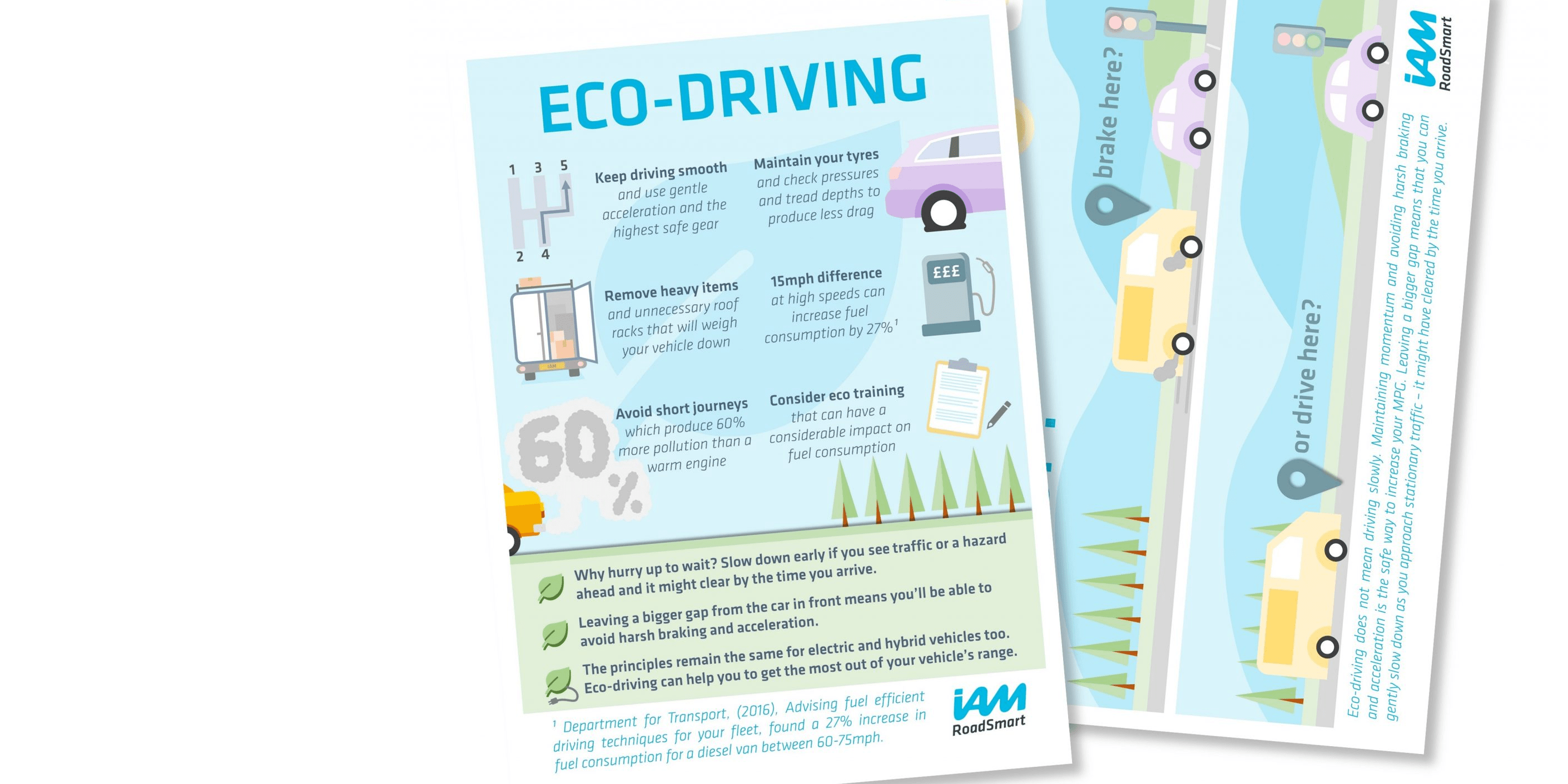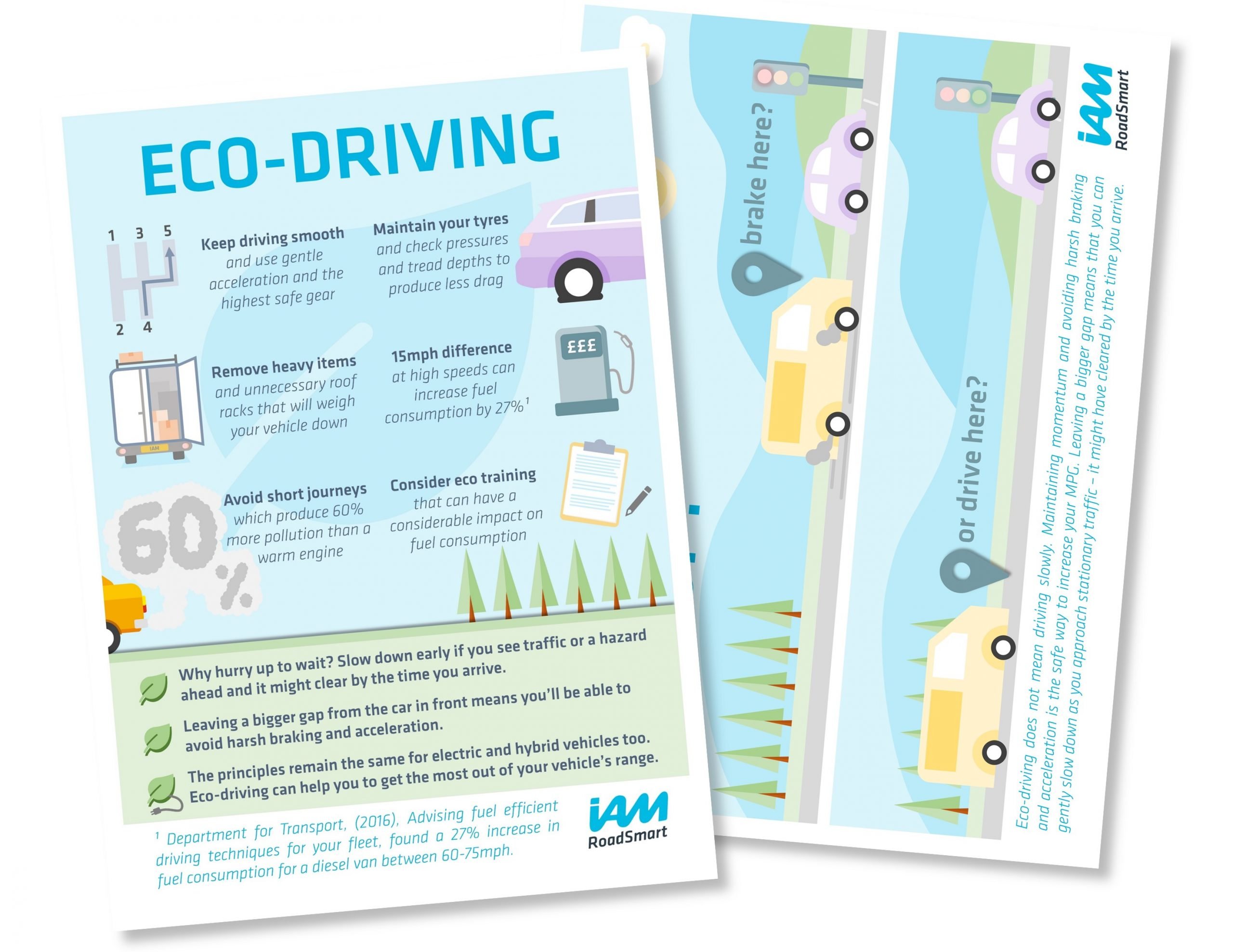
You might have noticed the ever-fluctuating (and often increasing) cost of fuel over the past year, and that’s why we’ve put together our top tips to help drivers make their travels as eco-friendly as they can be, which in turn will help cut the amount of fuel used.
Fleets stand to waste or save huge sums of money depending on whether their drivers drive in an eco-friendly manner, so we’re on hand to help drivers save money on filling up and to help avoid some of those unexpected costs when it comes to servicing and repairs. Here you’ll find IAM RoadSmart’s top hints and tips to travelling more economically.
Greener driving
Driving smoothly and anticipating situations and other road users as far ahead as possible will help to avoid unnecessary braking and acceleration. Maintain a greater distance from the vehicle in front so that you can regulate your speed, when necessary, utilising acceleration sense and without using the brakes.
When slowing down or driving downhill, remaining in gear but taking your foot off the accelerator as early as possible will reduce fuel flow to virtually zero, in most vehicles.
When accelerating, shift to a higher gear early, even in an auto you can try this where appropriate and always remember high speeds greatly increases fuel consumption too, so avoid excessive speed.
Offload unnecessary weight
Removing racks, roof boxes and bike carriers when they aren’t in use will significantly decrease air resistance and improve fuel consumption at higher speeds. Try to avoid carrying unnecessary weight on your travels as this will increase fuel consumption.
Avoid busy periods
If possible, try to avoid driving during heavy traffic. Stopping and starting in traffic needs the use of the first gear, and a lot of fuel is used to get the vehicle moving again. So, if you plan your journey to avoid busy roads or hours wherever possible, then you could save not only your time, but fuel as well.
Check your tyres
Keep your tyres well maintained by checking the condition, pressure and tread depth. An underinflated tyre will use more fuel. When it comes to choosing new tyres, it’s worth having a look at ones which are designed for extra economy. If you’re unsure on how to check your pressures, then check out Tyre Safe, who offer a range of resources for vehicle owners. However, it is always advisable to check the setting recommended by your vehicle manufacturer, and this can be found in your handbook. Consider changing to the high speed or load settings if you are on a long journey.
Avoid short journeys
During colder months, as your engine is trying to warm up, it uses more fuel for the first four miles or so. Your engine stays cold when you drive less than two miles, and your car will produce 60% more pollution than a warm engine. The National Travel Survey 2020 found 25% of trips were under 1 mile, and 71% under 5 miles, so could you consider leaving the keys at home and avoid those short journeys where possible?
Keep it low
By keeping your speed low, you can reduce fuel consumption by up to 25%. Try pressing more lightly on the accelerator, often you can maintain the same speed with less pressure on the pedal. You’ll soon see your mpg increasing.
Read the road ahead
Look to the road ahead and plan your next move. With proper anticipation, you can usually avoid having to press down hard on the brake pedal. Try slowing down as you approach the red light or junction – if you can keep the vehicle rolling slowly, all the better.
It’s also recommended to avoid hard acceleration wherever possible, such as when moving your car from a complete stop or when climbing a hill, as this can significantly increase fuel consumption.
Limit your use of climate control
Air conditioning (AC) is the single largest contributor to lower fuel economy during the summer. Under very hot conditions, AC can reduce a vehicle’s economy by a whopping 25%. If you can do without AC, turn it off and you’ll be rewarded with much better fuel economy. If you really do need to use AC, try to use it sparingly.
Richard Gladman, Head of Driving and Standards at IAM RoadSmart, said: “Advanced driving techniques lend themselves well to helping with fuel economy, observation, anticipation and planning. Smooth and gentle acceleration and early upward gear changes will also help you to save on your fuel consumption. It’s also worth making sure you are not carrying any excess baggage (do you really need your full toolbox in the boot?) or wind brakes such as roof boxes/bars or cycle racks when they are not needed as they will also help to reduce fuel use. At low speeds an open window may work as well as air conditioning and will probably use less fuel, but this will change as speeds increase and drag rises. But of course, the biggest saving of 100% will be if we can cut out the short journeys – that few hundred yards to the shop may just be the start of my new fitness campaign”
For fleets, increasing fuel economy amounts to huge savings on fuel costs. We can train your drivers in eco-friendly driving and a whole range of other techniques to boost their safety, confidence, and fuel efficiency. Get in touch to learn more.



